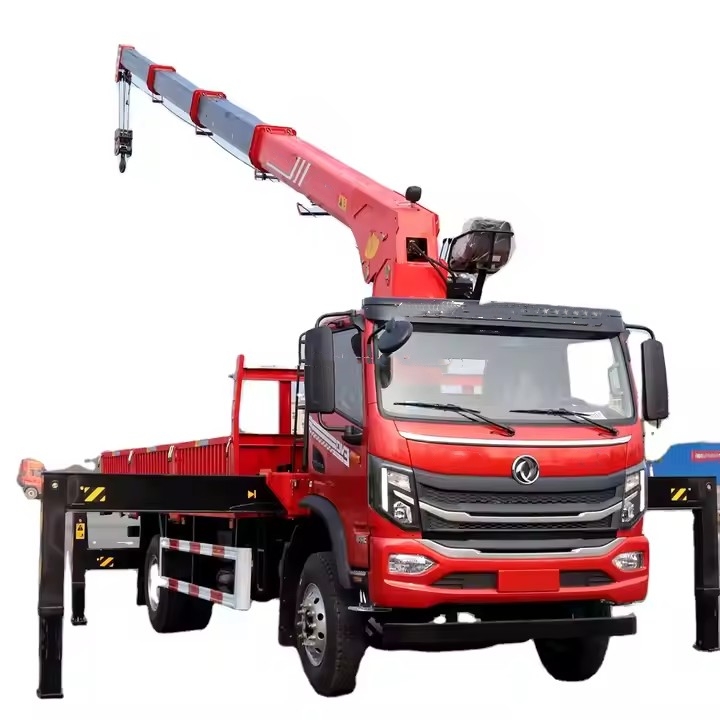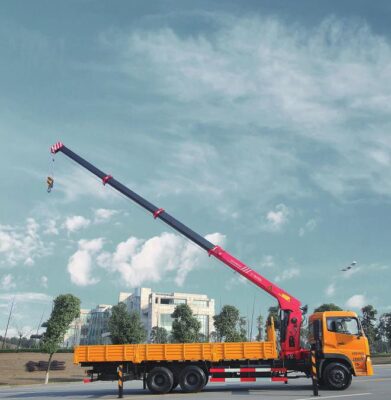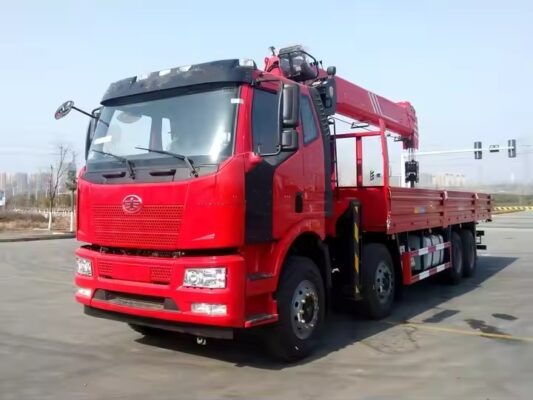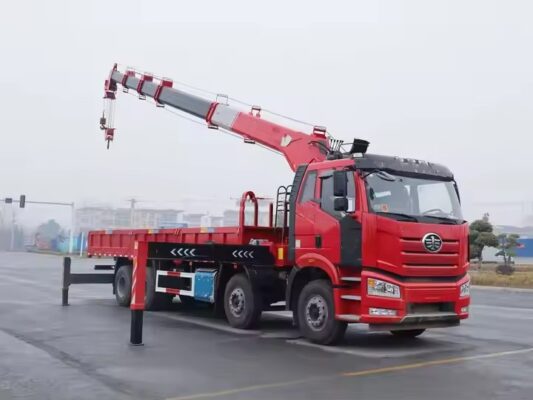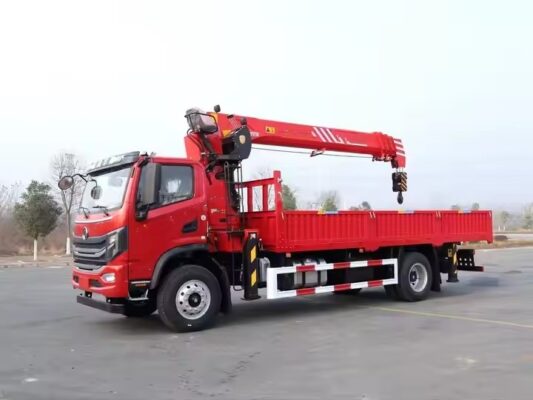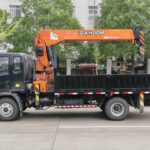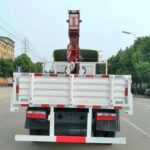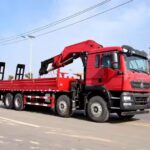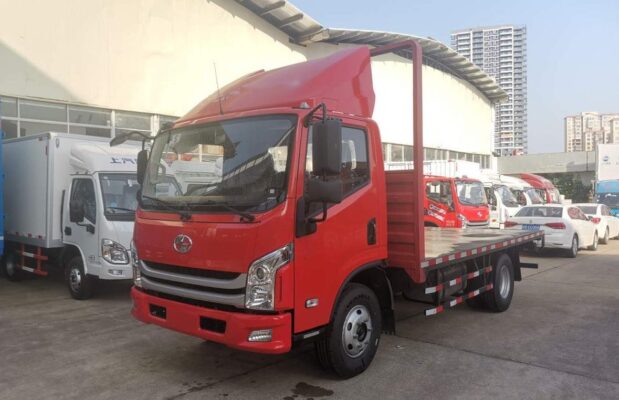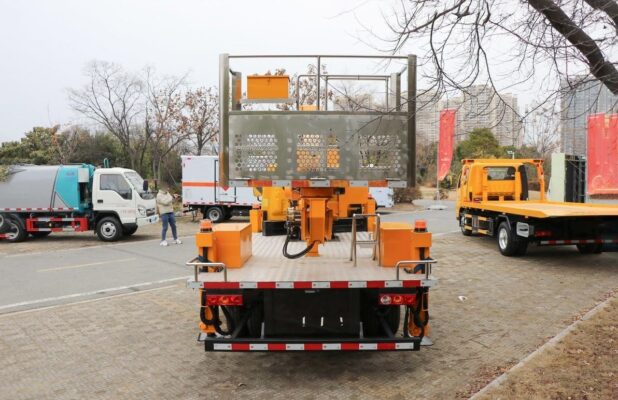1. Proper Positioning During Lifting Operations
During lifting operations, standing directly beneath the boom, the suspended load, or within the lifting path can be extremely dangerous. The triangular area formed by the guide pulley and steel cable, the surrounding area of the fast rope, or the force direction of a diagonally pulled hook are all hazardous zones. Any sudden accident in these areas can make it difficult to escape. тому, operators must be highly cautious about their positioning, frequently check their stance, remind colleagues, and ensure mutual supervision to prevent unforeseen dangers.
2. Understanding the Safety Factor of Slings
A critical aspect of lifting operations is understanding the safety factor of slings. Many workers assume that if a sling has not broken before, it remains safe for use. This assumption leads to overloading, putting the operation in constant danger. Recognizing the load limits and safety factors of slings is essential to preventing catastrophic failures.
3. Anticipating Risks in Dismantling Operations
Dismantling operations require a proactive approach to potential hazards, including estimating the weight of objects, ensuring thorough cutting, considering increased load due to compression forces, and inspecting connections before lifting. Failing to account for these factors can result in unpredictable accidents.
4. Avoiding Operational Mistakes
Crane operations often involve different teams, machinery, and lifting methods. Variations in daily operational habits, equipment performance, and signal communication can lead to mistakes. Thus, operators must exercise heightened caution, verify instructions, and communicate clearly to minimize the risk of errors.
5. Ensuring Secure Binding of Lifted Objects
When dismantling or lifting objects at high altitudes, items should be “locked” rather than merely “cradled.” Sharp edges and corners of lifted objects must be padded to prevent damage to slings, ensuring secure and safe lifting.
6. Preventing Loose Winding on the Drum
In large-scale lifting operations, if steel cables on the crane’s drum are not tightly wound, they may be forced into the bundle under heavy loads, causing sudden jerking or instability. This can create an unsafe working environment where operations may need to be halted unexpectedly, leading to dangerous situations.
7. Proper Welding of Temporary Lifting Lugs
- Insufficient Welding Strength: If the base material of a temporary lifting lug is corroded and not properly cleaned before welding, the welded joint may appear strong but may not properly fuse with the base material. Increased loads or sudden impacts can cause breakage.
- Single-Direction Load Bearing: When lifting or lowering tall objects, the load direction changes as the angle shifts. If the lifting lug design fails to consider this, it may unexpectedly snap. Щоб зменшити цей ризик, welding reinforcement plates on both sides of the lifting lug is advisable, ideally designed by a qualified engineer.
- Incompatible Welding Materials and Unqualified Welders: The use of inappropriate welding materials or unqualified welders can result in weak connections, leading to sudden failures.
8. Proper Selection of Lifting Tools and Lifting Points
Using makeshift lifting tools or choosing lifting points based on estimation rather than calculation can lead to structural failure. If a lifting tool or structure is not designed to handle the intended load, even a minor instability can lead to a complete collapse.
9. Choosing the Right Pulleys and Ropes
A common oversight in lifting operations is failing to consider the changes in forces due to variations in rope angles. If the pulley’s load capacity is underestimated or if the rope used for securing the pulley is too weak, excessive force can lead to snapped ropes or broken pulleys.
10. Avoiding Unintended Hooking of Objects
Many accidents occur when an unloaded sling unintentionally hooks onto an object during crane movement. If the operator or signal person fails to notice, the sudden jerking motion can cause serious accidents, leading to equipment damage or personnel injuries.
11. Aligning Lifting Plans with On-Site Operations
A well-prepared lifting plan must be practical and data-driven. If a plan lacks key details or does not align with real-world conditions, it becomes a mere formality rather than a useful guide for execution. A disconnect between planning and execution can lead to operational failures and unsafe conditions.
12. Securing Suspended Loads with Safety Ropes
Some equipment or components need to remain suspended before final installation. If such items remain in the air for extended periods without safety ropes, unexpected vibrations, impacts, or welding spatter can cause them to fall, leading to serious consequences.
13. Clear Communication Between Shifts and Work Units
When multiple teams work in sequence or in parallel, poor communication can lead to hazardous situations. Наприклад, if one shift dismantles part of a structure without informing the next team, workers may unknowingly step onto an unstable platform, leading to accidents.
14. Prioritizing Safety Over Speed
Focusing solely on project deadlines can lead to unsafe practices. Before starting operations, workers must check underground conditions for crane positioning, verify object weights, and identify potential hazards like high-voltage lines, operating machinery, or gas leaks.
15. Avoiding the Use of Damaged or Substandard Slings
Using discarded or damaged slings can be highly dangerous. Some slings may have internal damage, have been previously heat-treated, or have welding burns that compromise their integrity. Always inspect lifting gear carefully and purchase equipment from reputable manufacturers to ensure safety.
16. Never Use Hemp Ropes as Safety Lines
Hemp ropes lack the tensile strength required for safety applications. Додатково, they degrade over time, making them unreliable for securing personnel or loads.
17. Establishing Warning Zones
Failure to designate safety zones in high-risk areas can result in bystanders unknowingly walking into danger. Always set up warning signs and assign personnel to monitor restricted areas during lifting operations.
18. Accounting for Load Shifting in Long-Boom Cranes
When a crane with a long boom lifts a heavy load, the boom can bend slightly, shifting the center of gravity. If this adjustment is not properly accounted for, the load may suddenly shift, posing a serious risk to workers.
19. Accurate Weight Distribution in Dual-Crane Operationс
When two cranes lift and flip an object together, miscalculations in weight distribution can lead to one crane becoming overloaded and unstable. This can cause major equipment failure and severe financial losses.
20. Implementing Precautions in High-Risk Work Areas
Workers performing tasks on crane runways must coordinate with crane operators to prevent accidental collisions. Additional precautions such as placing warning flags, lights, or physical barriers can further reduce risks.
21. Considering Weather Conditions
Outdoor lifting operations must account for wind and rain. Unsecured crane booms or tower crane hooks can become hazardous in strong winds. Sudden storms can cause power failures, preventing operators from safely securing loads. Monitoring weather forecasts and implementing precautionary measures are crucial for safe operations.
Висновок
Crane operations involve multiple factors, including worksite organization, equipment selection, operator skills, environmental conditions, and teamwork. Ensuring safety requires a comprehensive approach, from careful planning to precise execution. Operators must continuously improve their skills, share experiences, and remain vigilant against potential hazards. Encouraging proactive communication, such as speaking up about safety concerns and offering assistance, can make a significant difference in preventing accidents. A single warning, suggestion, or timely action can ultimately save lives and equipment, reinforcing the importance of safety in crane operations.

